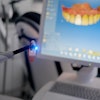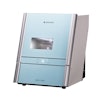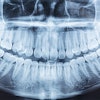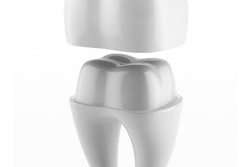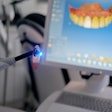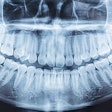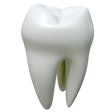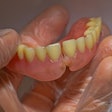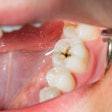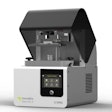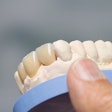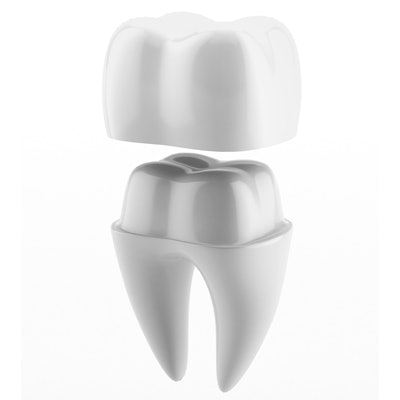
Chairside-generated CAD/CAM crowns placed by predoctoral students had high survival and success rates in a new study. The results suggest that these crowns will deliver predictable performance if placed correctly, according to the authors.
Predoctoral dental students inserted 40 monolithic lithium disilicate glass-ceramic CAD/CAM crowns in 32 patients. After a four-year follow-up, the researchers reported a survival rate of 95% and a success rate of 92%. Their research was published in the Journal of Esthetic and Restorative Dentistry (September 29, 2019).
"The results of this study provide data that allow the consideration of this technology as an effective treatment option for dentists with limited experience in providing CAD/CAM restorations," wrote the authors, led by Ahmed Aziz BDS, PhD, of the department of restorative dentistry at the University of Toronto Faculty of Dentistry in Ontario.
Multiple advantages
Chairside-generated CAD/CAM crowns offer many advantages over conventional laboratory-dependent fabrication methods, including the need for only a single appointment and administration of local anesthetic. These crowns also eliminate the need for provisional restorations.
“The high survival rate of chairside CAD/CAM crowns observed in this study suggests the likelihood of predictable performance in the predoctoral setup.”
Researchers conducted a retrospective study to assess the clinical performance of these CAD/CAM crowns when placed by predoctoral students. They also wanted to see if patient attributes, such as age, gender, or periodontal condition influenced survival rates of the crowns.
The students placed 40 posterior lithium disilicate glass-ceramic CAD/CAM crowns in 32 patients, who were followed for four years. Of the total crowns, 22 were placed on premolars and 18 on molars. Of the premolar crowns, 14 were placed in the maxilla and eight in the mandible. For the molars, 12 crowns were placed in the maxilla and six in the mandible.
Crown preparations were milled chairside using the CEREC Omnicam system (Dentsply Sirona). They included at least a 1.0-mm shoulder or distinct chamfer margin, 1.0-mm buccal and palatal/lingual reduction, with rounded line angles at an angle of approximately 10° to 30°, and 1.5-mm occlusal reduction. The crowns were cemented with RelyX Unicem (3M) or Calibra Universal (Calibra Cements) resin cements.
The four-year survival and success rates were 95.0% and 92.3%, respectively, the researchers found. They also reported a 92.0% patient satisfaction rate with crown function. Overall, both clinicians and patients were very satisfied with crown shade, crown shape, and chewing ability (see table below).
| Clinician and patient satisfaction with crown function | |||
| Clinician satisfaction | Patient satisfaction | ||
| Crown shade | 91.0% ± 0.83% | 94.0% ± 1.51% | |
| Crown shape | 92.0% ± 1.21% | 95.0% ± 1.35% | |
| Chewing ability | 93.0% ± 1.12% | 96.0% ± 1.45% | |
The researchers recorded no technical complications, such as crown fracture, chipping, or loss of retention. They also found no significant association between survival rate and patient attributes, such as age and gender. Similarly, patients' periodontal condition did not seem to influence the crown survival rate.
Predictable performance
The authors noted that their study had a small sample size and a relatively short observation period; thus, they recommended that larger clinical studies with longer observation times be conducted.
They concluded that, while predoctoral students might be considered as being relatively inexperienced, the study findings on the success of treatment were comparable to findings reported by other studies.
"The high survival rate of chairside CAD/CAM crowns observed in this study suggests the likelihood of predictable performance in the predoctoral setup," they wrote.
